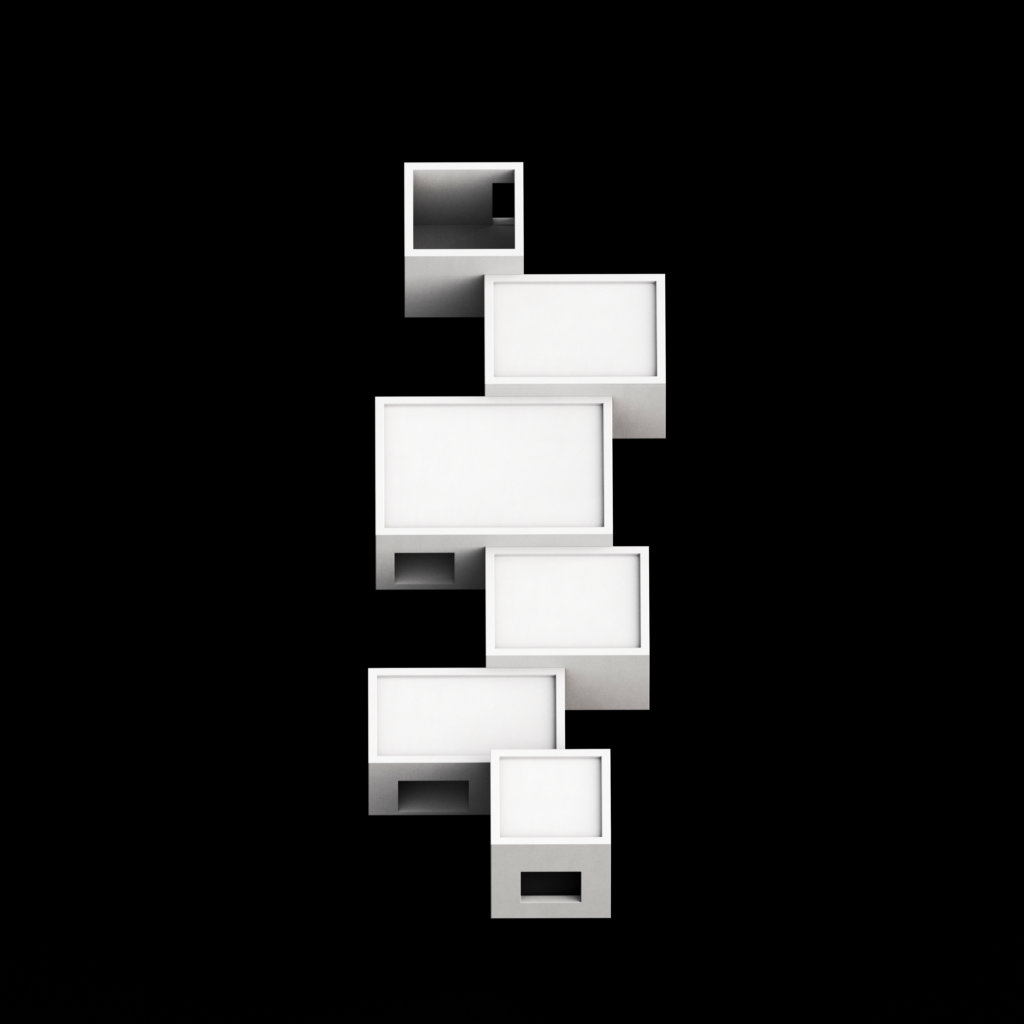
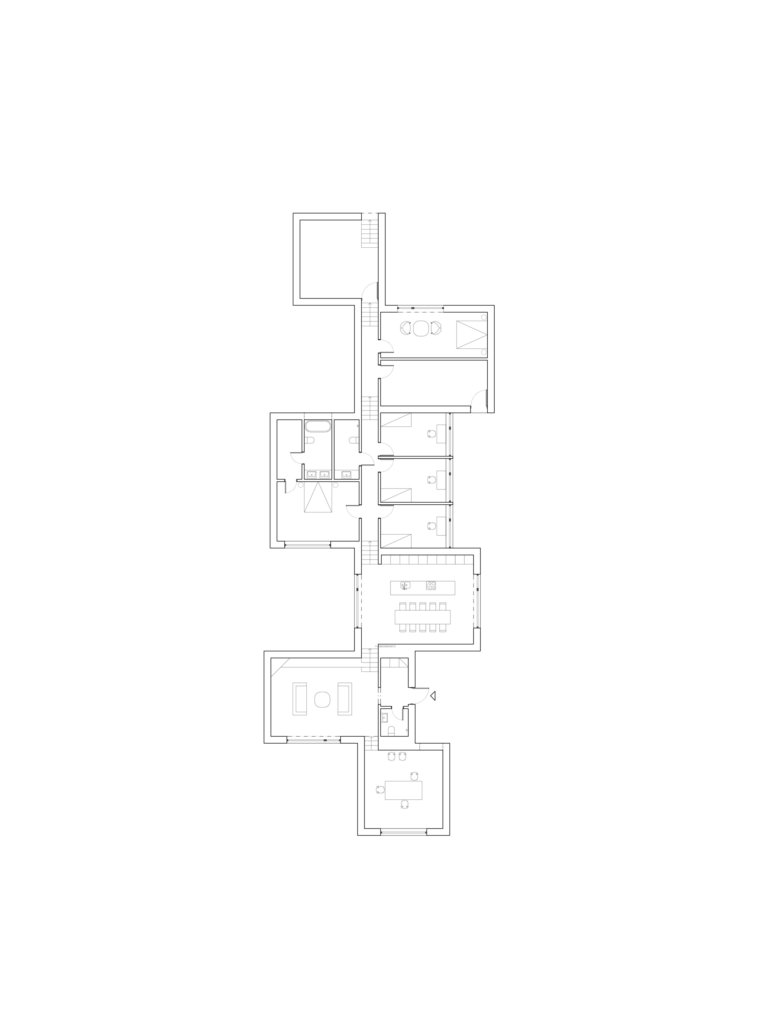
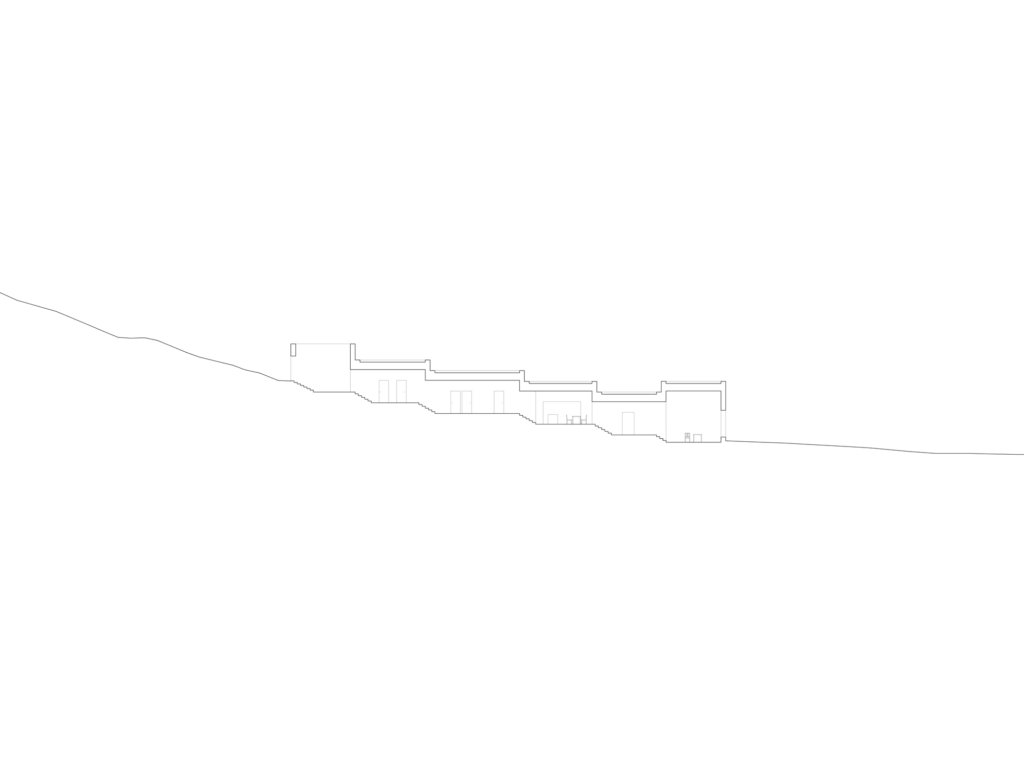
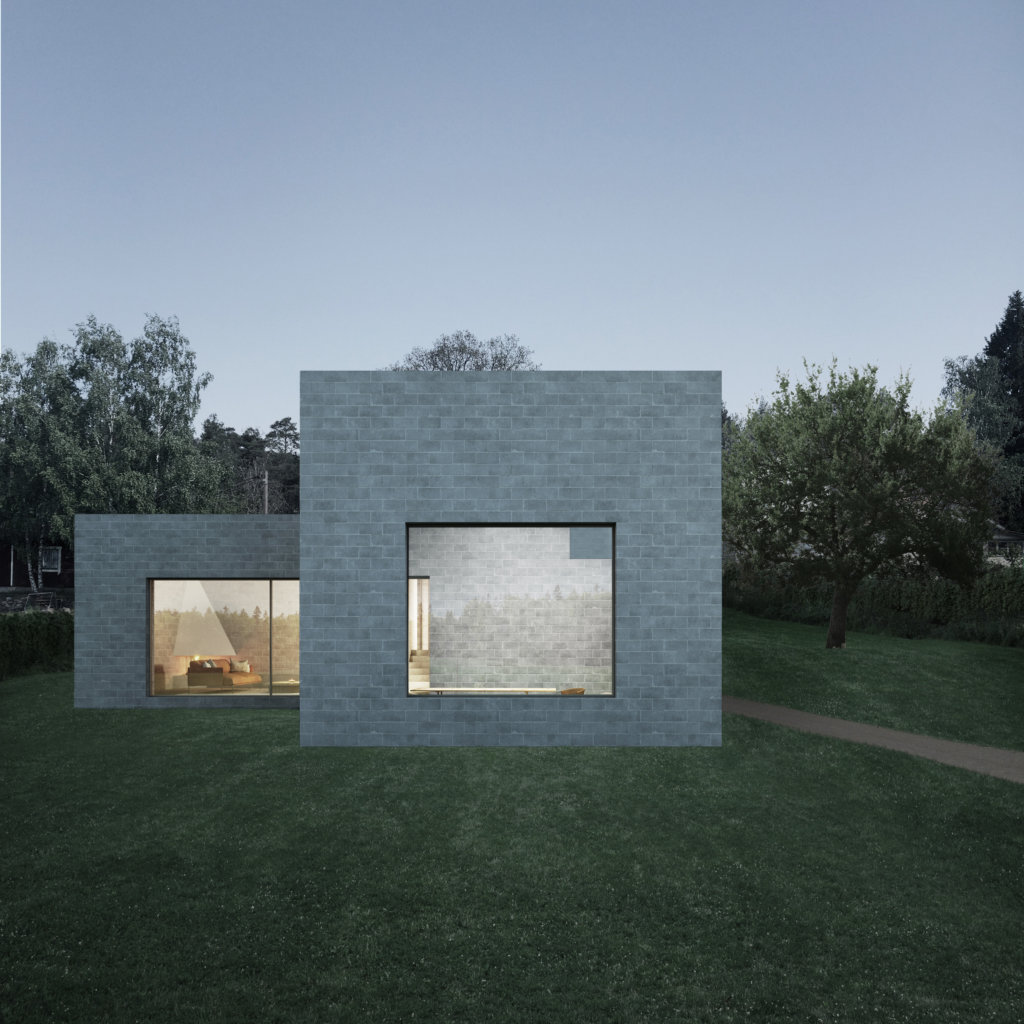
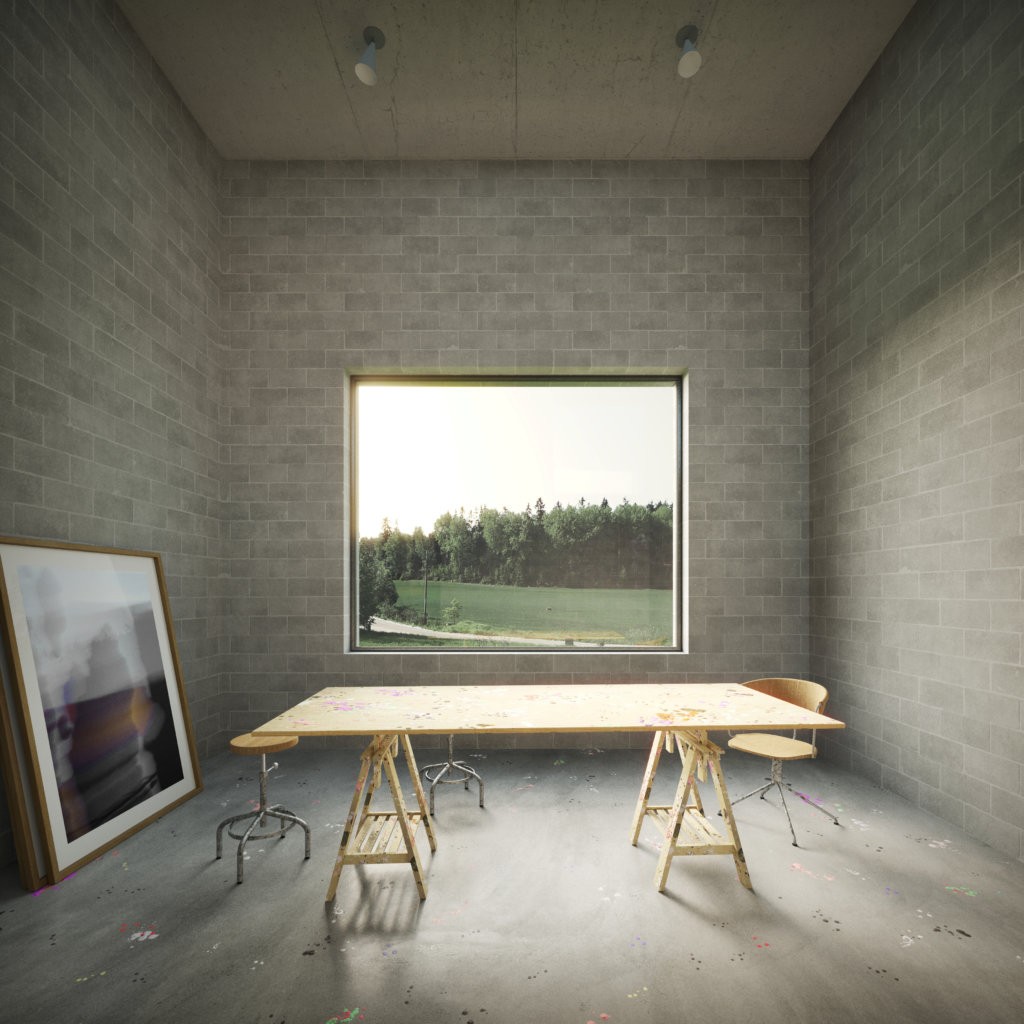
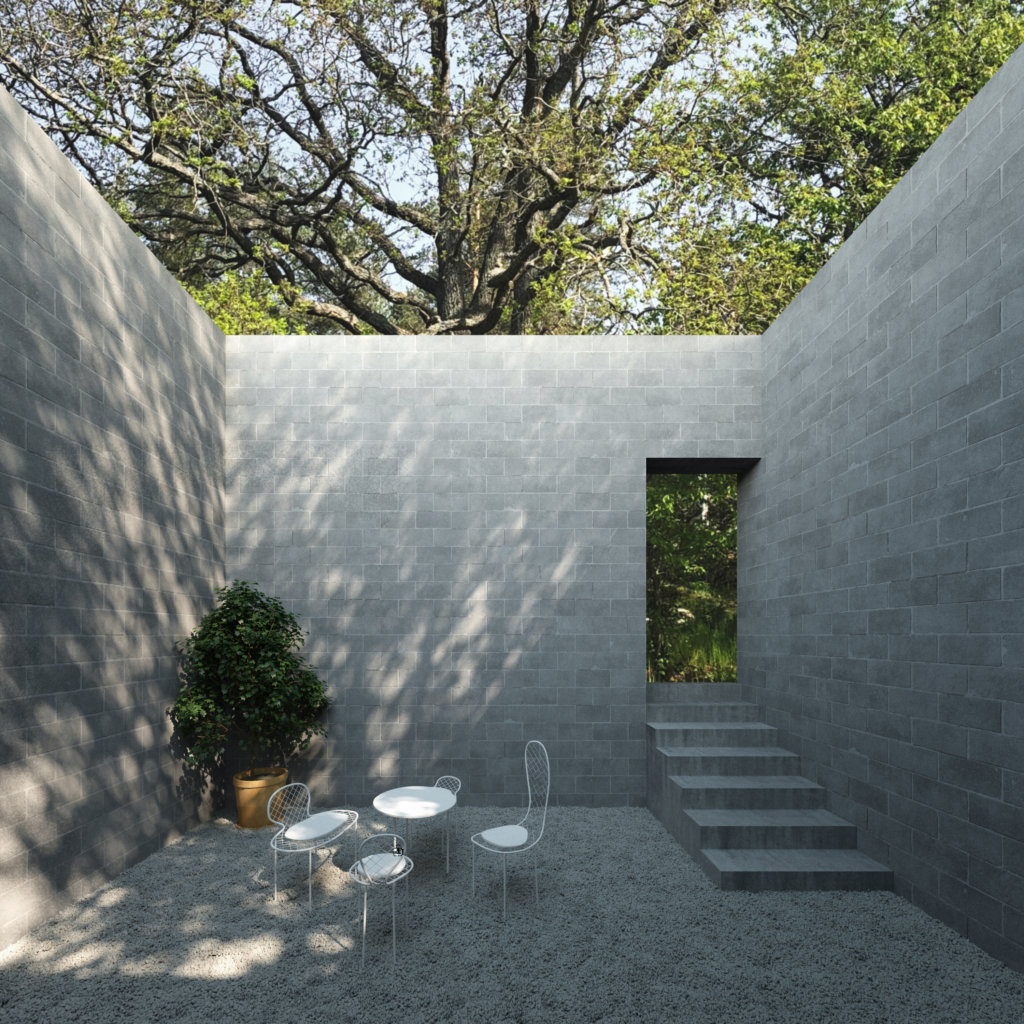
House on a hillside
2019-
This home is laid out as six blocks stepped in section and staggered in plan. A straightforward structure that, following the natural topography of the site, produces varied and complex spatial qualities for the interior. The blocks are all interconnected along a linear interior passage that, with a few steps between each level, responds closely to the existing landscape.
With the home proper contained in the four central blocks, the two spaces located at each end of the stretch of rooms are for common use: an atelier/work shop to the south and a hidden outdoor courtyard to the north. The latter constitutes a link that allows the interior passage to extend up towards an old oak tree and further up into the forested hill. While moving through the house, a sequence of open and closed interior spaces alternate, with access to several outdoor spaces shaped by the shifted plan.
The proposed materiality of the house, a pared down palette of concrete blocks and large but few window openings. The site was previously the location of glass houses for growing fruit and vegetables as part of the surrounding farmland. The big oak tree at the foot of the hill is a reminiscence of the hunting grounds and oak forests belonging to the Drottningholm castle nearby. The concrete blocks that are still often used for the structure of local barns and stables will be left exposed and eventually overgrown with ivy, a natural species in the area.
